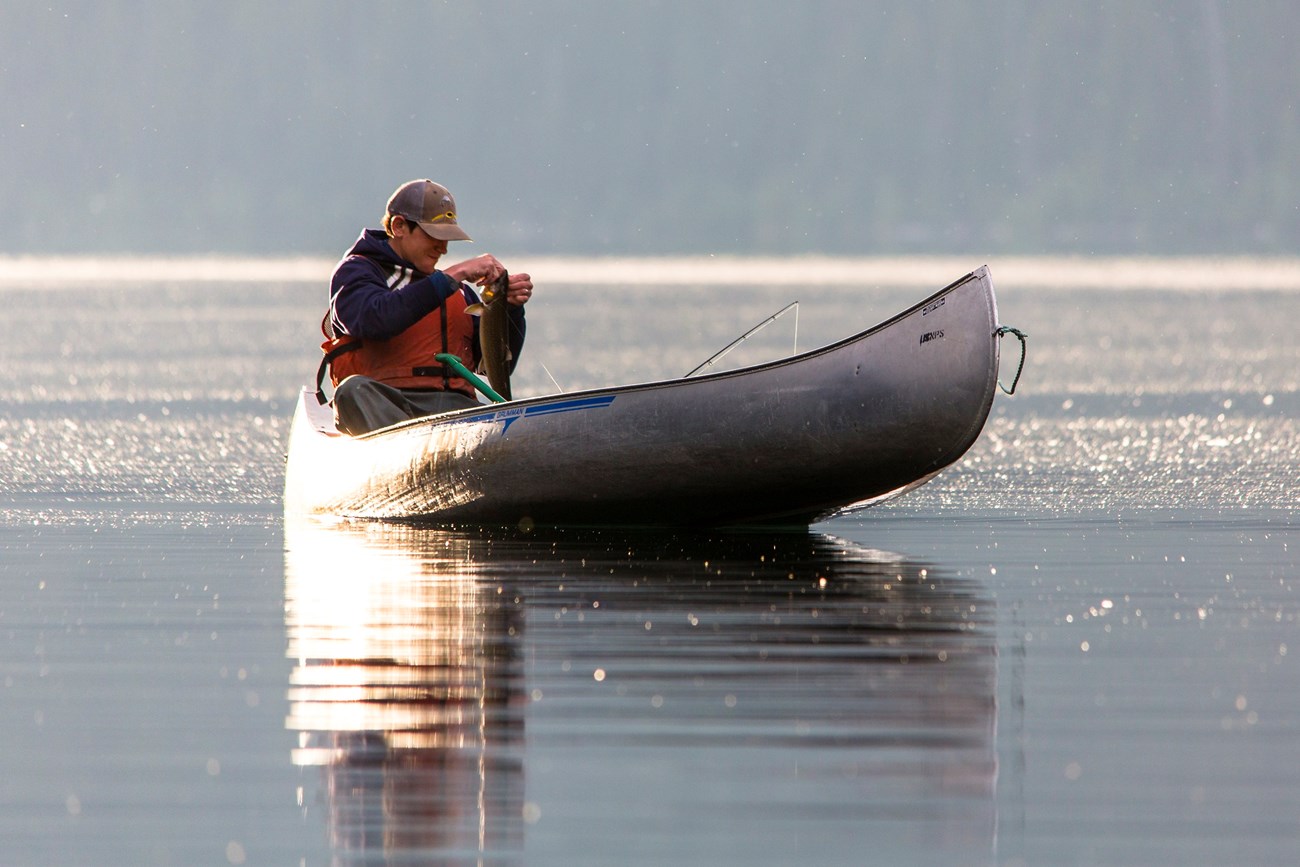Last updated: August 7, 2020
Article
Reel It In: Be Prepared for a Successful Fishing Day

NPS/Jacob W. Frank
Whether you want to fish from the beach, or reel in your catch while wading in the creek, there are plenty of ways to go fishing in national parks. Be prepared BEFORE YOU GO by planning your trip and bringing the right gear. Keep these fishing safety tips in mind for a fun and successful day out on the water.
If you fall into the water, you may not be able to reach your life jacket if it was left on the shore or in your boat. If you can reach it, it’s nearly impossible to put it on while you are in the water. Don't take the chance of drowning, wear your life jacket!
When fishing around, on, or in open water, children and poor swimmers should always wear a properly fitted, U.S. Coast Guard approved PFD. Inflatable swimming rings and inflatable water wings are not a substitute for a life jacket. Assign a person in your family or group to be the “Water Watcher”. This person is responsible for keeping track of the children in your group when you are around, on, or in water. A moment’s distraction could quickly lead to a child drowning.
- Handle the hook carefully during baiting and removing your catch
- Look around before you cast - make sure no one is near you
- Always wear shoes in fishing areas - discarded hooks and sharp rocks could injure your feet
Natural bodies of water can be very cold even in the summertime. Hypothermia can begin to occur in water that is 80 degrees or colder, depending on your health, body composition, clothes you are wearing and other factors. Hypothermia causes your body temperature to drop below 98.6 degrees. Symptoms can range from mild to severe - impacting your ability to think and move to becoming unconscious leading to possible death. Know when to get out of the water and what to do if someone experiences hypothermia.
Natural water bodies like rivers, lakes, and oceans, have many hidden hazards below the surface of the water that you can’t see: swift currents, submerged trees, unexpected holes, and steep drop-offs to name a few.
Swift moving bodies of water are especially hazardous. You can easily slip on a rock, fall into the water, and be quickly washed downstream with the current. It is important to understand water safety in and around fast moving water. If you plan to cross any rivers, learn how to plan and prepare for your river crossing.
Oceans, estuaries, and their tributary streams are tidal – Tides reverse about every six hours. Fishermen, beach users, rock climbers, and cave explorers can become trapped, and potentially drown, when incoming tides flood their return to safe ground. Keep track of time so you don’t get caught by the incoming tide. If trapped by a flooding tide, seek higher ground and call for help.
Animals tend to hang around their feeding grounds or areas where food is present. Be aware that there may be dangerous wildlife near your fishing spot. Watch for signs of bears, alligators, wolves, and other aggressive wildlife. Know what to do if you happen to meet an animal out in the wild.
Many parks provide fish cleaning stations for disposing of fish guts and remains properly. Bears and other animals have a strong sense of smell and are attracted to the fish you clean and gut. Disposing of remains in general waste receptacles can attract a wide variety of animals and birds and can increase the risk of an unexpected wildlife encounter between visitors, staff and the animals.
Check out our Junior Ranger Let’s Go Fishing Booklet! Some parks also offer local junior ranger programs, ask at the park’s visitor center to learn more.
Plan and prepare for your trip with help from the NPS Trip Planning Guide and learn about Health & Safety in national parks.
Are you planning to hike to your fishing spot? Check out our article on how to Hike Smart.
